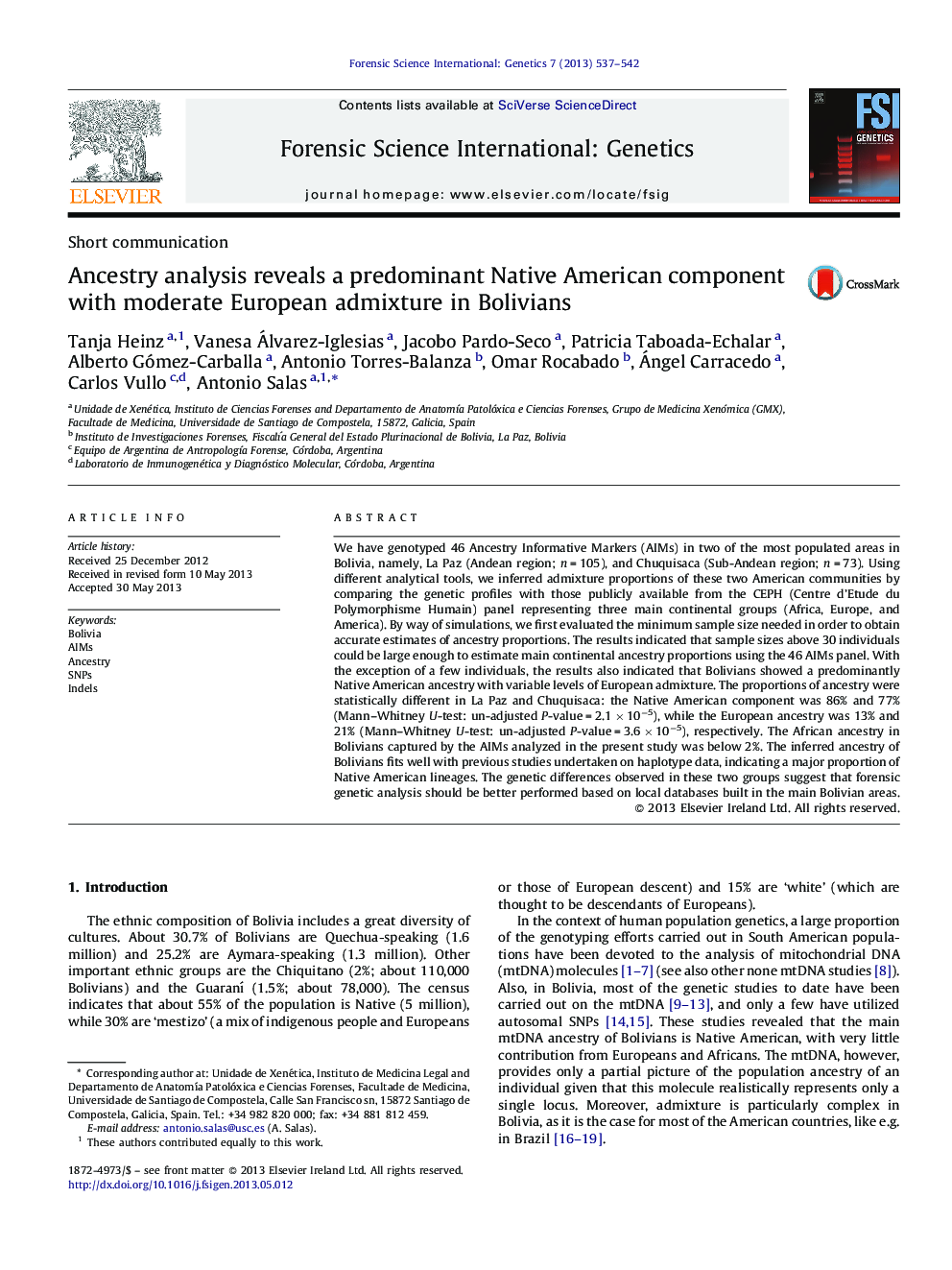| Article ID | Journal | Published Year | Pages | File Type |
|---|---|---|---|---|
| 10254153 | Forensic Science International: Genetics | 2013 | 6 Pages |
Abstract
We have genotyped 46 Ancestry Informative Markers (AIMs) in two of the most populated areas in Bolivia, namely, La Paz (Andean region; n = 105), and Chuquisaca (Sub-Andean region; n = 73). Using different analytical tools, we inferred admixture proportions of these two American communities by comparing the genetic profiles with those publicly available from the CEPH (Centre d'Etude du Polymorphisme Humain) panel representing three main continental groups (Africa, Europe, and America). By way of simulations, we first evaluated the minimum sample size needed in order to obtain accurate estimates of ancestry proportions. The results indicated that sample sizes above 30 individuals could be large enough to estimate main continental ancestry proportions using the 46 AIMs panel. With the exception of a few individuals, the results also indicated that Bolivians showed a predominantly Native American ancestry with variable levels of European admixture. The proportions of ancestry were statistically different in La Paz and Chuquisaca: the Native American component was 86% and 77% (Mann-Whitney U-test: un-adjusted P-value = 2.1 Ã 10â5), while the European ancestry was 13% and 21% (Mann-Whitney U-test: un-adjusted P-value = 3.6 Ã 10â5), respectively. The African ancestry in Bolivians captured by the AIMs analyzed in the present study was below 2%. The inferred ancestry of Bolivians fits well with previous studies undertaken on haplotype data, indicating a major proportion of Native American lineages. The genetic differences observed in these two groups suggest that forensic genetic analysis should be better performed based on local databases built in the main Bolivian areas.
Related Topics
Life Sciences
Biochemistry, Genetics and Molecular Biology
Genetics
Authors
Tanja Heinz, Vanesa Álvarez-Iglesias, Jacobo Pardo-Seco, Patricia Taboada-Echalar, Alberto Gómez-Carballa, Antonio Torres-Balanza, Omar Rocabado, Ángel Carracedo, Carlos Vullo, Antonio Salas,
